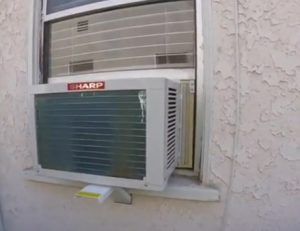Air conditioner installation is the process of installing an air conditioner in a house or office. There are many types of air conditioner installations, and each one is useful in different situations. Understanding the basics of air conditioner installation will help you decide whether you need to hire a professional to complete the task for you, or if you are capable of doing it yourself. The process of installing air conditioners can be done by most homeowners.
Split systems: As the name implies, this is the most common type of air conditioner installation. Split systems feature a central cooling unit that has been divided into two pieces. Each piece is equipped with its own compressor and heat-roof. The air conditioner is located inside, and it contains the heat radiator and evaporator. The two cooling chambers are located behind the unit. They are separated by a heat sensing wall.
Split cooling units use an indoor evaporator coil to transfer cool air to the indoor compressor. To complete the installation, holes must first be dug into the walls, and then ceilings must be sealed off to provide a drain. This drain connects the indoor evaporator coil to the indoor compressor and then allows the refrigerant gas to exit the system. The outside of the cooling unit is left blank, so when the installation is completed, the new cavity can be filled with coolant fluid.
Heat Pumps: Heat pump are air conditioners that use hydraulic compression to move cool air through the evaporator tubes. An air conditioner without a heat pump will force the cool air through a series Evaporator Coils. A heat pump uses a series heat exchangers to move hot air from the outside into the house. Both types of air conditioners require very little maintenance, but each requires a different type of installation.
Hard Hats: When installing an air conditioner, one of the first things that need to be done is to install the air conditioner control box. The control box for the air conditioner controls all functions, including the speed of the evaporator coils and the temperature level. It also controls humidity levels and dehumidifiers moisture in the air. Without the correct control box, it is impossible to successfully install your unit. For instance, if your existing line set up is too low, you will have inadequate levels of refrigerant gas flowing through the lines, and consequently, the system will not function properly. You may experience problems with moisture freezing inside the unit if your existing line setup is too high.
Heat Pumps: The majority of people who want to have a modern air conditioner installed opt for a heat pump rather than a traditional one. A ductless heatpump is a new type of heating and cooling system, which is widely regarded as the best on the market. This new generation of heating/cooling systems uses heat exchange, air compression, and air flow to reduce cooling costs. Sometimes, ductless systems can be installed with a combination of these components.
Central Air Conditioning: A central air conditioner is a better option for a traditional installation. A licensed and insured company usually provides central air conditioning. Central air conditioners provide cooling and heating services throughout the home or building. Make sure your cooling and heating company are included in the service agreement when you choose a central air conditioner. As most HVAC contractors offer free installation, this is definitely one of the biggest savings you can get when it comes to HVAC installation.
It is important that an insured and licensed contractor installs the air conditioner correctly before any installation can take place. If an installer does not follow the proper guidelines, the air conditioner could experience problems such as leaky pipes, electric problems, improper ventilation and even damage to the structure of the building. One of the best ways to ensure the proper installation and safe operation is to find a local experienced HVAC contractor. You can either find a local contractor in your area by conducting a standard telephone search or browsing through the internet, both of which should provide you with a list of local HVAC contractors.


